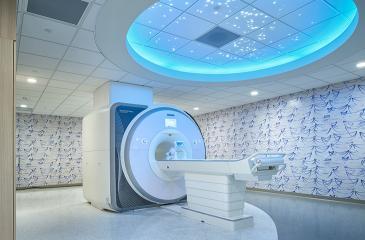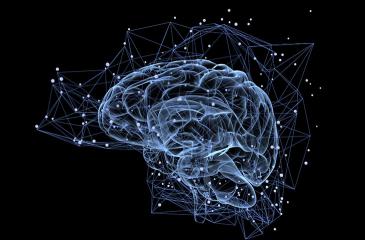Talking Mental Health and Brain Development with U of M
Early brain development has important implications for mental health outcomes. At the University of Minnesota, the Masonic Institute for the Developing Brain (MIDB) is working to advance knowledge around brain health to help children grow and thrive.
Damien Fair, PA-C, PhD, and Kathryn Cullen, MD, talk about the connection between brain development and mental health, supporting early brain development and their research.
Q: How do brain health and mental health intersect?
Dr. Fair: As a neuroscientist, I am pressed to say that the brain is the most important organ of your body. It serves as the control center for all bodily functions and processes. Its complex network of over 100 billion neurons and 100 trillion connections enables it to control and integrate all aspects of human experience, including all aspects of our quality of life. Not surprisingly, optimizing brain health and its ability to function effectively for cognitive tasks, memory, physical activities and so on, is extremely important.
Mental health often pertains to emotional, psychological and social well-being, which can be influenced by brain health. Promoting brain health through proper nutrition, physical exercise, reading and other forms of mental stimulation supports mental health. Likewise, managing mental health through therapy, stress reduction and social interactions can influence and even enhance brain health.
Q: How does early brain development affect mental health later in childhood and adolescence?
Dr. Cullen: This is an active area of research. The teenage years represent an important time for brain development, as well as vulnerability to mental health problems. On average, most mental health disorders emerge during the adolescent period. We know these disorders have neurodevelopmental origins, but exactly how this works is still unknown. Research is now beginning to chart the developmental trajectories associated with typical and atypical neurodevelopment to better understand how to promote healthy development.
Q: How does the external environment influence the brain?
Dr. Fair: The environment is highly influential in brain development. The brain is highly “plastic” — meaning it is designed to be malleable and will work to develop optimally under all sorts of conditions. It matures maximally in supportive environments and can be resilient to many adverse conditions, but not all. Positive early childhood experiences, such as nurturing care and educational activities, stimulate healthy brain growth, while neglect or adverse experiences such as chronic stress or trauma exposure can impede development.
Proper nutrition, especially during prenatal and early childhood (e.g., the first 1000 days), is vital for brain health. Physical activity is another environmental factor that boosts and promotes growth essential for brain health. Access to education and diverse learning opportunities fosters brain and cognitive development. In other words, a stimulating, nurturing environment is crucial for optimal brain development.
Q: What can be done early in a child’s life to support a healthy mind and brain?
Dr. Cullen: Supporting brain development and mental health early in a child’s life really comes down to the basics. Children need safety and protection from harm. They need love and support. They need to get enough sleep. They need healthy nutrition, and they need opportunities to learn and play. Ensuring these basic needs can allow the brain to develop and allow children to become their best selves.
Q: What are you doing to advance research in this area?
Dr. Fair: The University of Minnesota is running all sorts of studies around youth brain health. We lead two national studies on brain development during the two critical periods of development: childhood and adolescence. The HEALthy Brain and Child Development study is following about 7,500 infants and children from the second trimester through early childhood for the next 10 years. It aims to understand how environmental factors, like nutrition, family bonding and substance use exposures, affect early brain health. The Adolescent Brain Cognitive Development (ABCD) study, follows about 12,000 kids ages 9-10 through adolescence where brain health around puberty, social interactions, social media and screens, sleep, state policies, and all sorts of other environmental exposures can be examined. At MIDB, we are also doing many studies on therapeutics for mental health disorders such as adolescent depression and applied science work to help educators and policymakers to improve the classroom and legislation that benefits all of youth.
Dr. Cullen: My lab is currently studying brain developmental trajectories associated with depression, self-injury and suicide risk in adolescents. Some of our work uses the data from the ABCD study that Dr. Fair has been co-leading. Our work also involves in-depth mental health assessments of adolescents who are at risk and exploring different kinds of interventions aimed at promoting healthy developmental trajectories in these youth. Most recently, we have been examining creativity in youth and exploring creative arts interventions as a way to improve mental health and well-being in young people.



